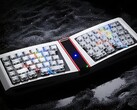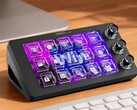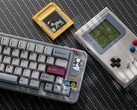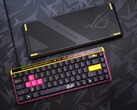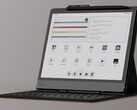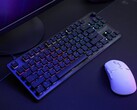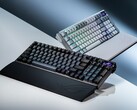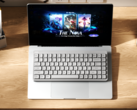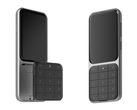The Split70 is a fairly standard keyboard in terms of its underlying technology, particularly regarding its keys. However, its fundamental design is remarkable, as the Split70 isn't a single, monolithic piece. Instead, it consists of two separate halves. The device is completely wireless, transmitting data via a 2.4 GHz connection with a polling rate of up to 1,000 Hz. Bluetooth offers a polling rate of 125 Hz. Latency increases from 3 milliseconds with a wired connection and 5 milliseconds in 2.4 GHz mode to 15 milliseconds when using Bluetooth.
Limited layout
The two halves of the keyboard can be freely positioned, which may allow for more ergonomic use. In principle, using just one part of the keyboard is conceivable; the left side, for example, should be sufficient for use in shooters. A numpad and a six-key keypad are lacking, but a rotary encoder is included.
RGB lighting and linear switches
The keyboard comes in two color options and uses Wisteria Linear Switch V2 switches, which have a travel of up to 3.6 millimeters. RGB lighting is supported, but using it is said to drastically reduce battery life from 260 hours to just 11 hours. The keycaps are easily replaceable, allowing users to customize the keyboard's feel.
The Epomaker Split70 is currently available for $116, not including shipping. The RK Royal Kludge RKS70 is a possible alternative.








